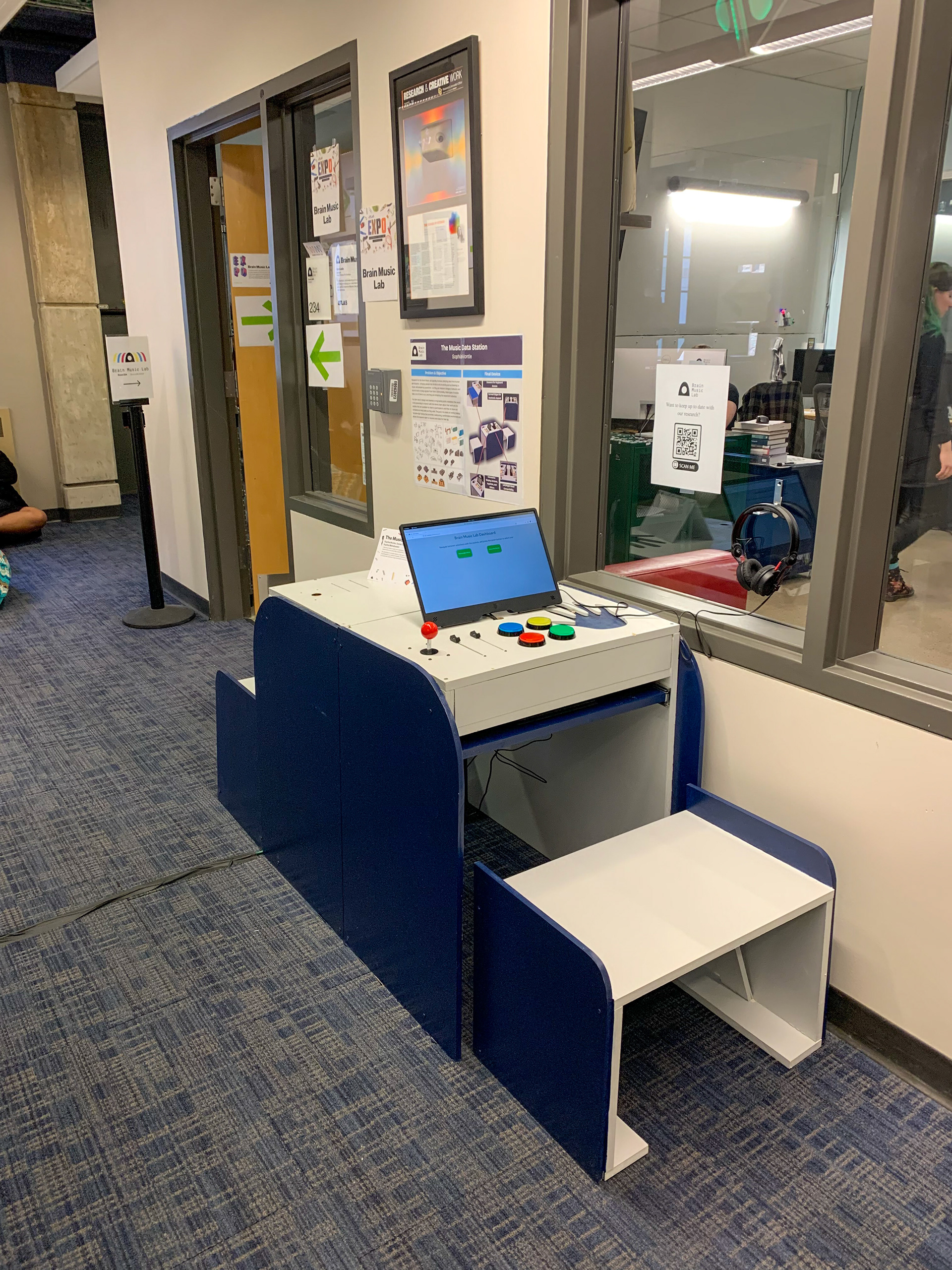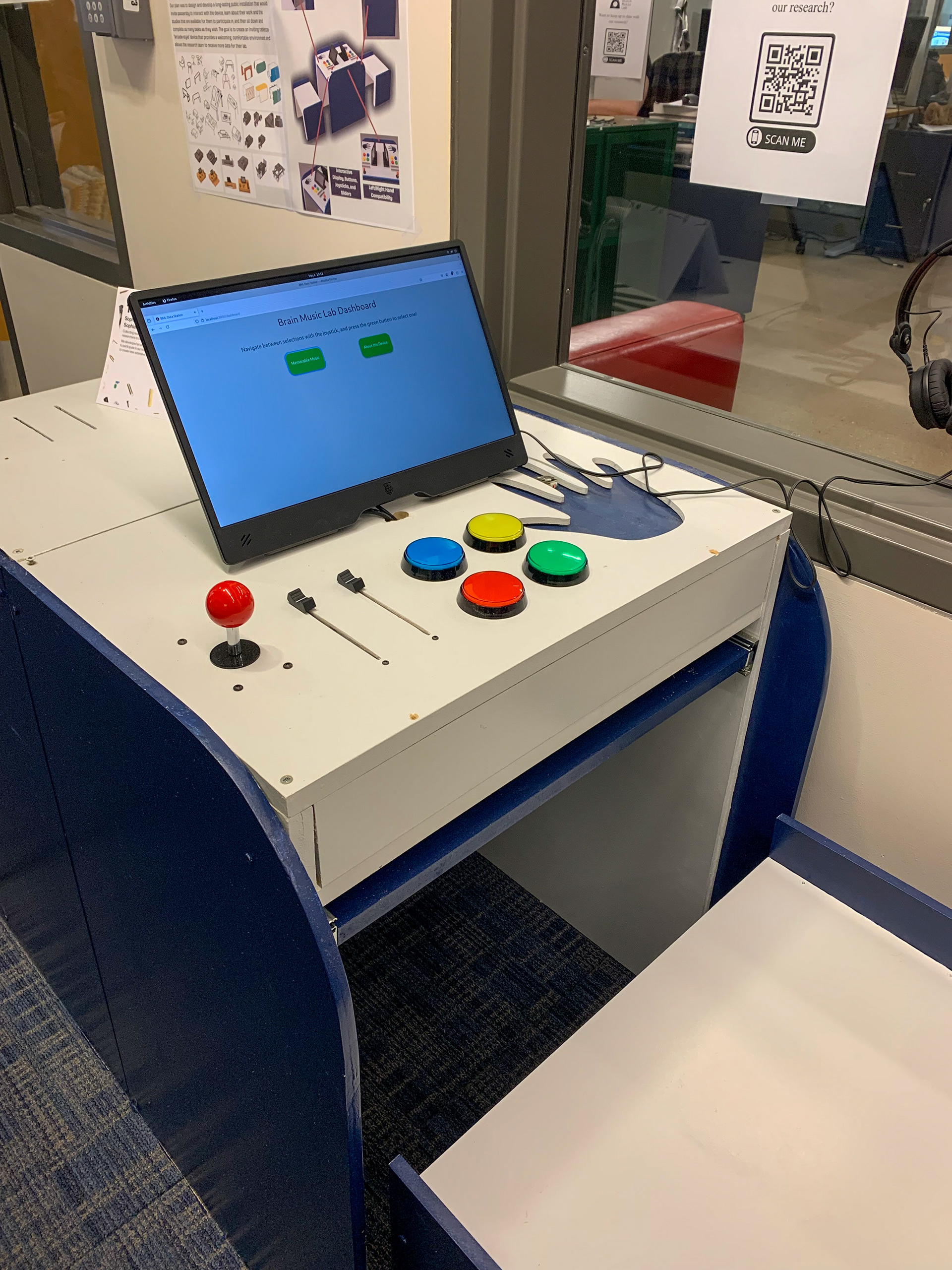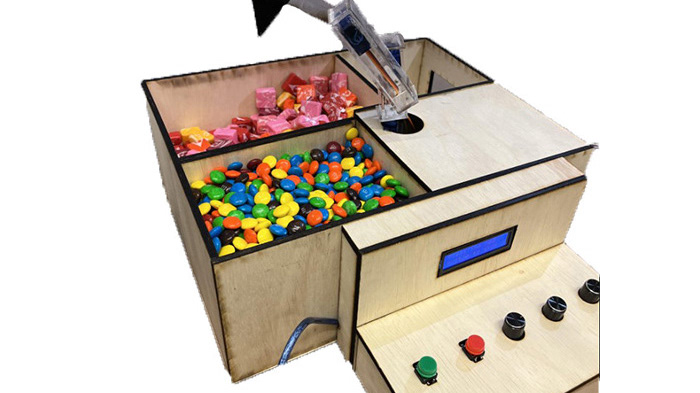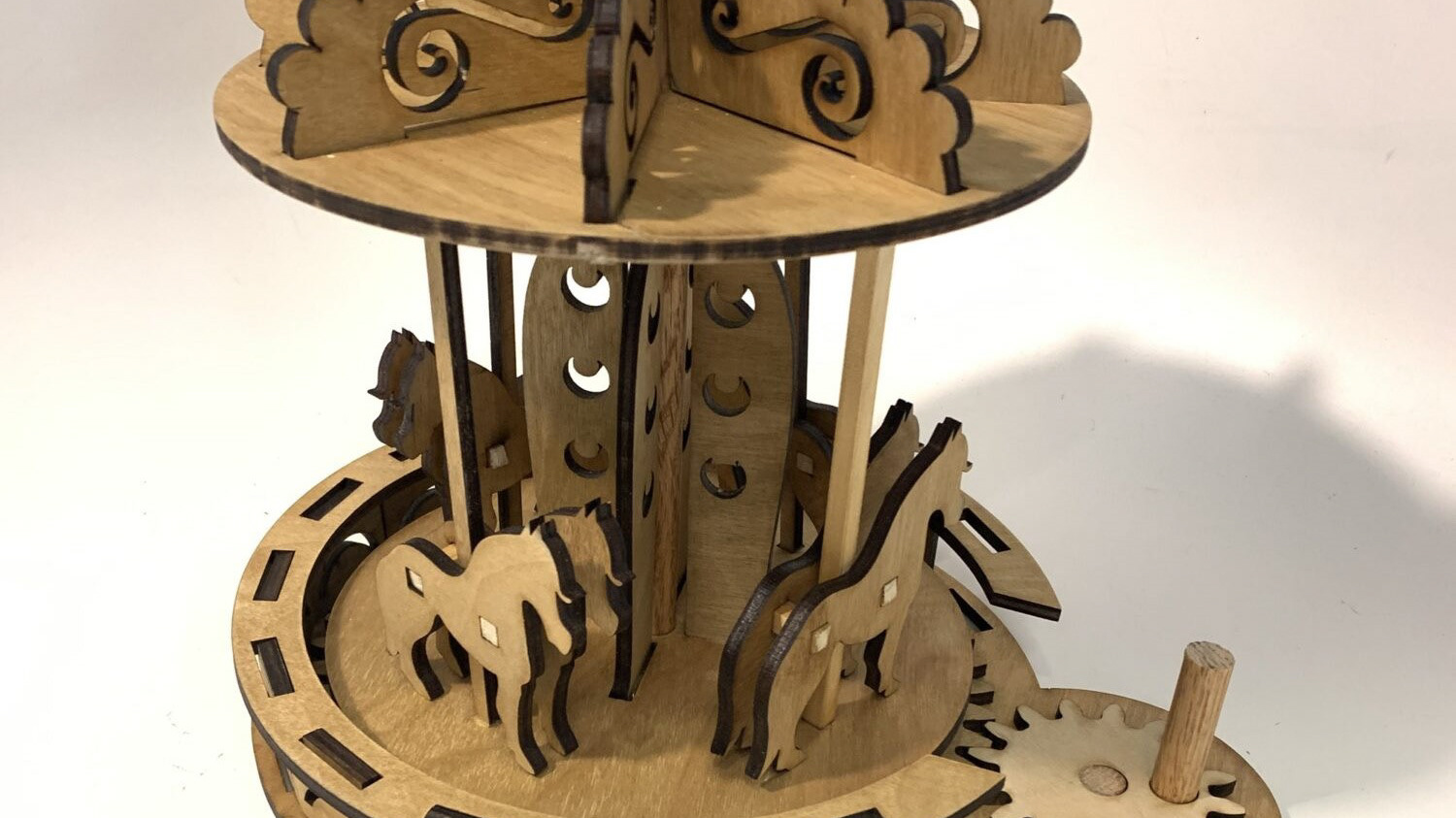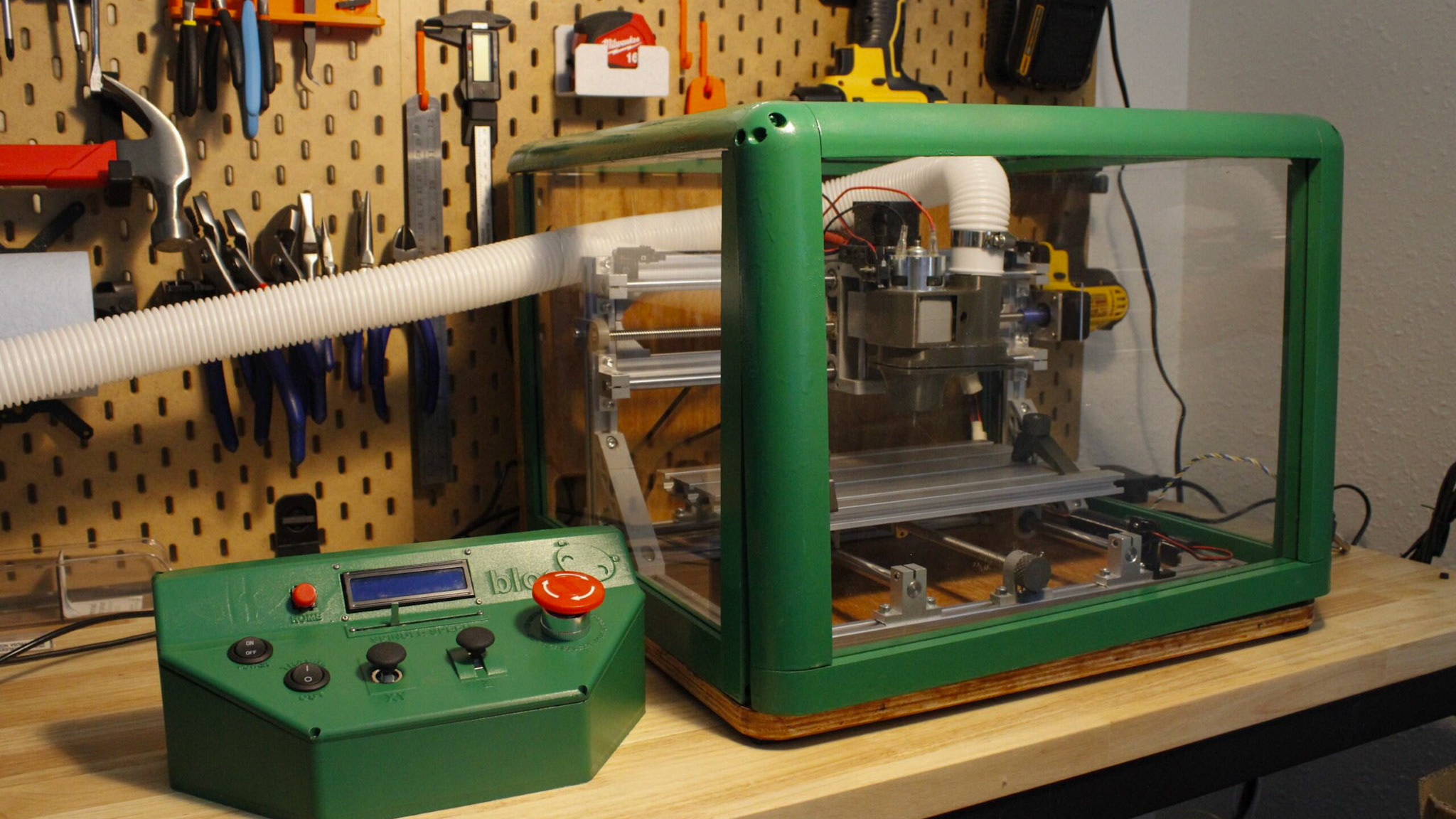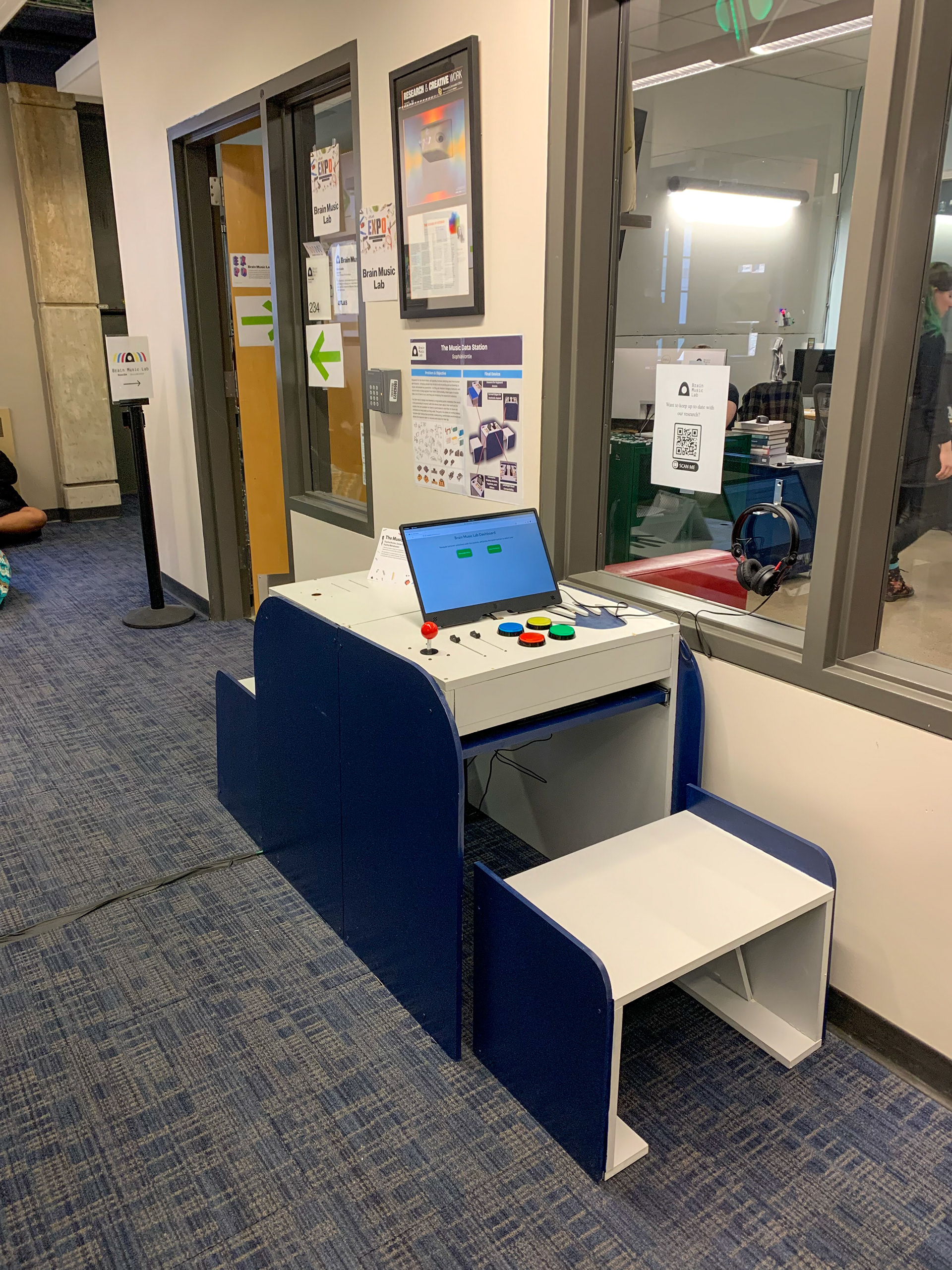

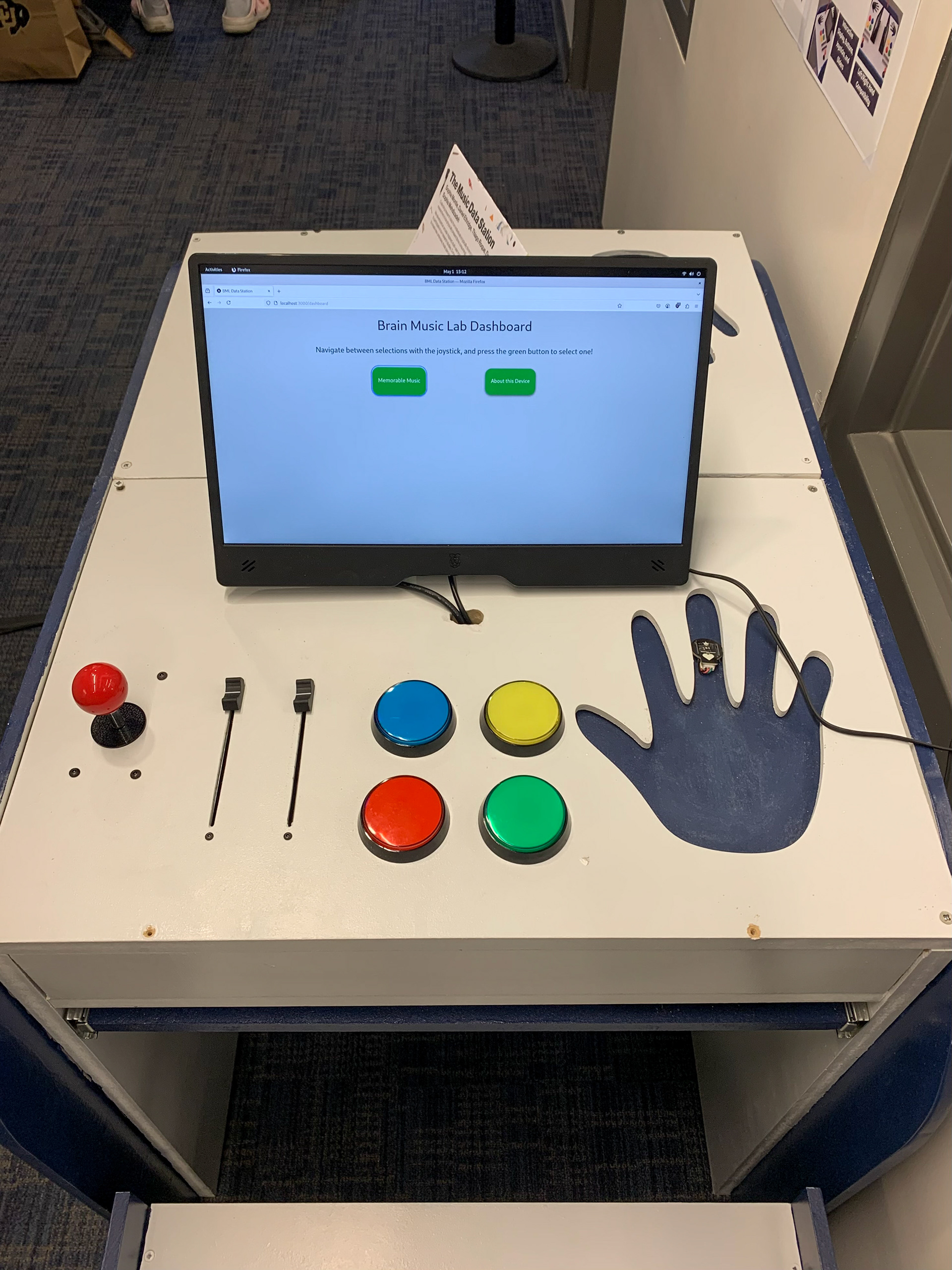

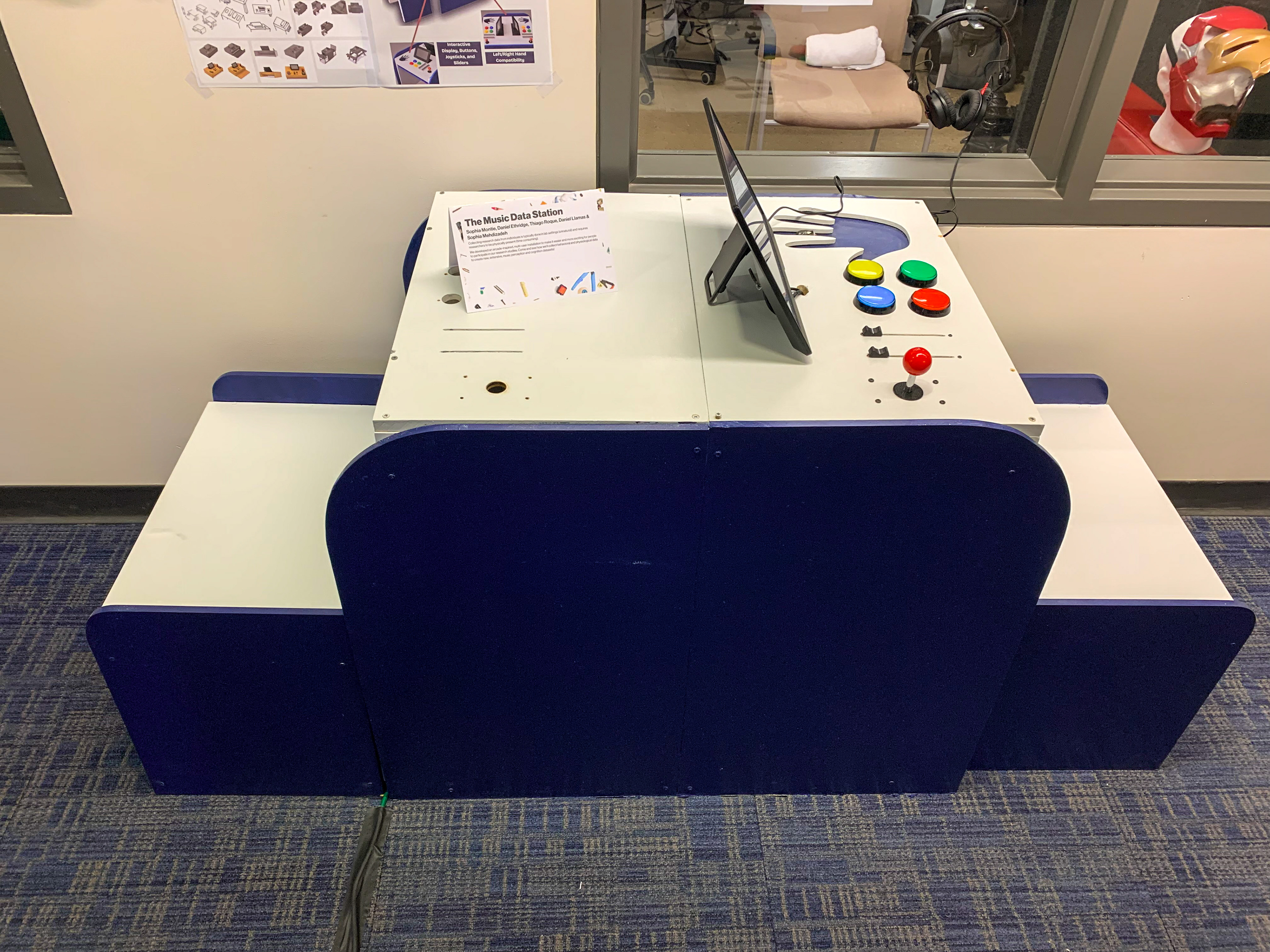
Problem
Research for the Brain Music Lab typically involves collecting data from human participants – bringing people into the lab to do an activity such as listening to music and answering questions – so they can measure changes in behavior and record brain or body signals from them. Unfortunately, these types of studies take a lot of time to run, and they are limited by the researcher's schedule.
Objective
To design and develop a long-lasting public installation that would invite passersby to interact with the device, learn about their work and the studies that are available for them to participate in, and then sit down and complete as many tasks as they wish. The goal is to create an inviting tabletop "arcade-style" device that provides a welcoming, comfortable environment and allows the research team to receive more data for their lab.
Inspiration
Referenced precedent table-top interaction devices and considered multiple different design aesthetics to explore aesthetics and form.
Precedent devices
Aesthetic Ideation
Concept Development
The concept started with rapid sketches inspired by movement and interaction. These initial designs included various methods of seating and table layouts, shaping the look and feel of the arcade table to make it both intuitive and engaging.
Model Development
Initial models began with exploring interactive, game-like features, progressing to aesthetic and overall function of the device. As the design evolved, the models began to integrate functional requirements based on lab testing needs. Interactive elements such as buttons, joysticks, sliders, and a display were refined to align with both aesthetic goals and user ergonomics. Final iterations considered optimal hand placement for PPG sensors and other components, ensuring both intuitive use and effective data collection.
Prototyping
The prototypes ranged from early low-fidelity models used to test basic interactions, to more refined iterations that informed design decisions and visual layout. Interactive components such as buttons, joysticks, sliders, and displays were gradually integrated during user testing, with careful consideration of ergonomics and hand placement for PPG testing.
Final Product
The final device is a public installation in the ATLAS Institute, inviting passersby to engage through intuitive, game-like controls while contributing to ongoing lab research in a friendly and accessible way.
